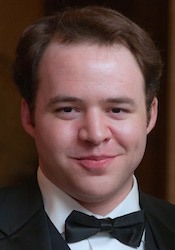Program Information
Student-Driven Exploration of Radiographic Material Properties, Phantom Construction, and Clinical Workflows Or: The Extraordinary Life of CANDY MAN
RN Mahon , MJ Riblett*, GD Hugo , Virginia Commonwealth University, Richmond, VA
Presentations
SU-F-E-10 (Sunday, July 31, 2016) 3:00 PM - 6:00 PM Room: Exhibit Hall
Purpose: To develop a hands-on learning experience that explores the radiological and structural properties of everyday items and applies this knowledge to design a simple phantom for radiotherapy exercises.
Methods: Students were asked to compile a list of readily available materials thought to have radiation attenuation properties similar to tissues within the human torso. Participants scanned samples of suggested materials and regions of interest (ROIs) were used to characterize bulk attenuation properties. Properties of each material were assessed via comparison to a Gammex Tissue characterization phantom and used to construct a list of inexpensive near-tissue-equivalent materials. Critical discussions focusing on samples found to differ from student expectations were used to revise and narrow the comprehensive list. From their newly acquired knowledge, students designed and constructed a simple thoracic phantom for use in a simulated clinical workflow. Students were tasked with setting up the phantom and acquiring planning CT images for use in treatment planning and dose delivery.
Results: Under engineer and physicist supervision, students were trained to use a CT simulator and acquired images for approximately 60 different foodstuffs, candies, and household items. Through peer discussion, students gained valuable insights and were made to review preconceptions about radiographic material properties. From a subset of imaged materials, a simple phantom was successfully designed and constructed to represent a human thorax. Students received hands-on experience with clinical treatment workflows by learning how to perform CT simulation, create a treatment plan for an embedded tumor, align the phantom for treatment, and deliver a treatment fraction.
Conclusion: In this activity, students demonstrated their ability to reason through the radiographic material selection process, construct a simple phantom to specifications, and exercise their knowledge of clinical workflows. Furthermore, the enjoyable and inexpensive nature of this project proved to attract participant interest and drive creative exploration.
Funding Support, Disclosures, and Conflict of Interest: Mahon and Riblett have nothing to disclose; Hugo has a research agreement with Phillips Medical systems, a license agreement with Varian Medical Systems, research grants from the National Institute of Health. Authors do not have any potential conflicts of interest to disclose.
Contact Email:

